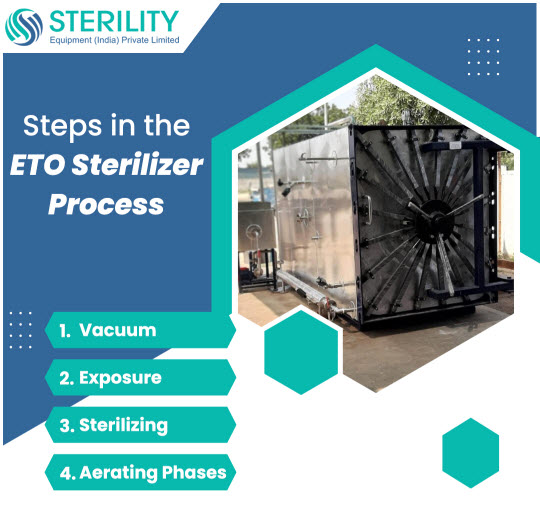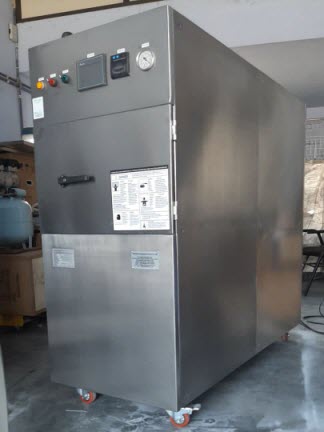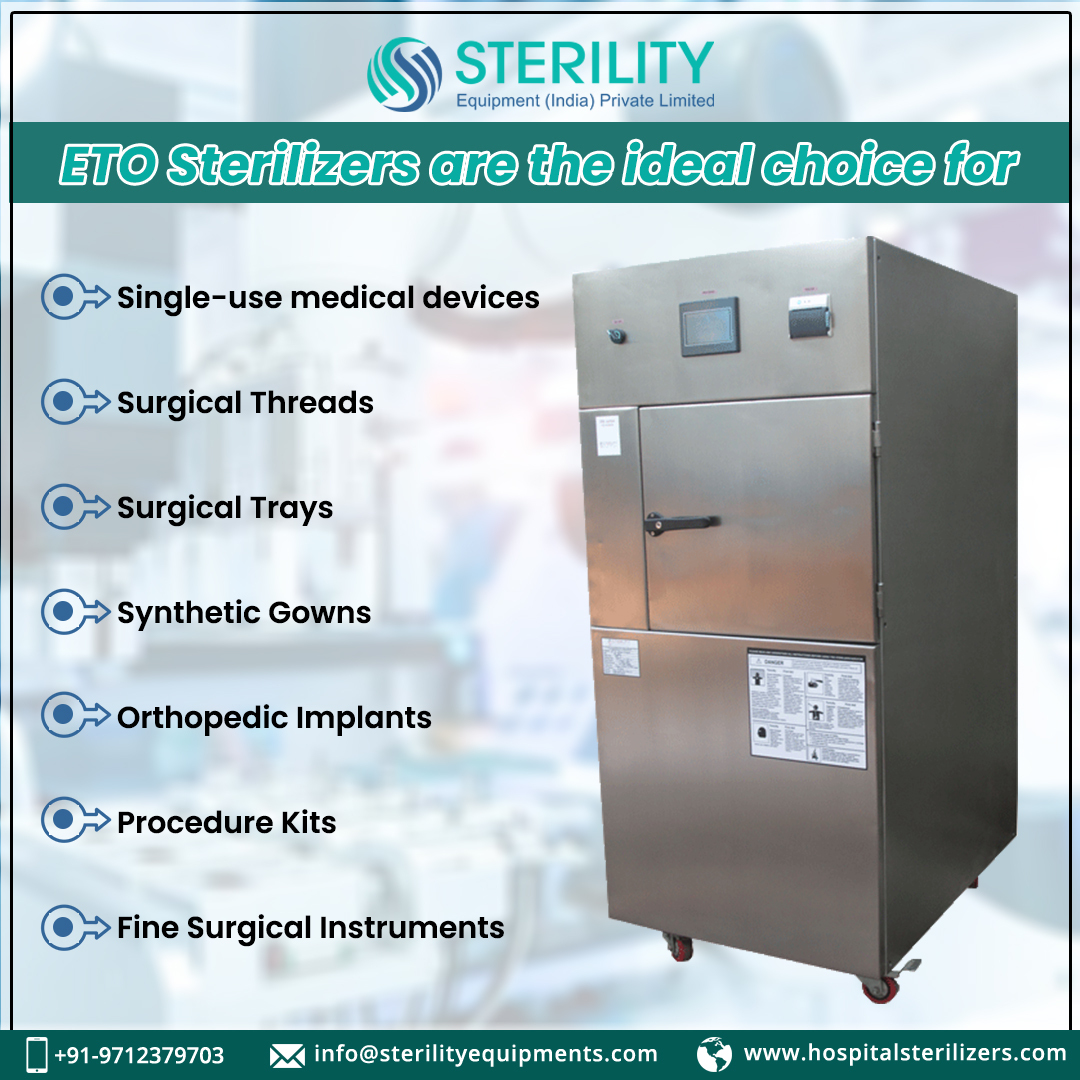In the operation theatre, ETO sterilization monitoring plays a critical role in ensuring both quality and compliance. Effective monitoring practices are essential to guarantee the elimination of harmful microorganisms and maintain a safe environment for patients and healthcare professionals alike. By closely monitoring the sterilization process, healthcare facilities can identify any shortcomings or deviations, mitigating the potential risks associated with inadequate sterilization practices.
Proper monitoring ensures that the ETO sterilization process consistently achieves its intended purpose, which is to eradicate microorganisms from medical equipment. It involves the use of monitoring devices, such as chemical indicators, biological indicators, and process indicators, to assess the effectiveness of sterilization cycles.
Inadequate sterilization practices can have severe consequences, including the transmission of infections and compromised patient safety. By understanding the importance of monitoring, healthcare facilities can uphold stringent quality standards and comply with regulatory requirements. Continuous monitoring enables early detection of any deviations from the desired sterilization parameters, allowing prompt corrective actions to be taken.
Understanding ETO Sterilization Process
ETO (Ethylene Oxide) sterilization is a widely used method for eliminating microorganisms from medical equipment that cannot withstand high temperatures or moisture. This process is particularly effective for items such as plastic materials, electronic devices, and delicate instruments.
The ETO sterilization process involves several stages that ensure thorough sterilization while minimizing potential damage to the equipment. Understanding these stages is crucial for comprehending how ETO sterilization effectively eliminates microorganisms.
- Preconditioning: The first stage involves preparing the equipment for the sterilization process. The items are placed in a chamber where the humidity and temperature are carefully controlled. This step helps to optimize the conditions for effective sterilization.
- Exposure: In this stage, the equipment is exposed to a controlled amount of ethylene oxide gas. Ethylene oxide has excellent penetration properties, allowing it to reach and destroy microorganisms in hard-to-reach areas. The gas disrupts the cellular structures of bacteria, viruses, and other microorganisms, rendering them incapable of reproduction.
- Aeration: After exposure to ethylene oxide, the equipment undergoes aeration to remove residual gas and minimize potential hazards. This process typically takes place in a separate aeration chamber, where the equipment is subjected to controlled airflow and temperature. Aeration ensures the removal of toxic residues, making sterilized items safe for use.
Throughout the sterilization process, careful monitoring is essential to ensure optimal results. Monitoring devices, such as chemical indicators, biological indicators, and process indicators, are used to assess critical parameters like gas concentration, temperature, humidity, and exposure time. These indicators provide visual or quantitative feedback, indicating whether the sterilization process has achieved the desired level of efficacy.

The Role of Monitoring Devices in ETO Sterilization
Monitoring devices play a crucial role in ensuring the effectiveness of ETO sterilization processes. These devices provide valuable information about critical parameters and help assess the success of sterilization cycles.
- Chemical Indicators: Chemical indicators are designed to change color or exhibit a specific chemical reaction when exposed to the sterilization process. They provide a visual indication that the items have been subjected to the sterilization cycle. Chemical indicators are usually placed on the outside and inside of packages or directly on equipment. They serve as a quick and easily visible confirmation that the sterilization process has occurred.
- Biological Indicators: Biological indicators, also known as spore tests, are considered the gold standard for assessing sterilization effectiveness. These devices contain a highly resistant population of bacterial spores that are more challenging to kill than typical microorganisms. After exposure to the sterilization process, the biological indicators are incubated and checked for microbial growth. The absence of growth indicates that the sterilization process was successful in eliminating the spores, ensuring the overall effectiveness of the cycle.
- Process Indicators: Process indicators provide information about specific parameters during the sterilization process. These indicators monitor critical factors such as temperature, humidity, exposure time, and gas concentration. By using process indicators, operators can verify that the sterilization conditions have been met throughout the entire cycle. Deviations or abnormalities indicated by process indicators can prompt further investigation and corrective actions.
Proper utilization of monitoring devices is vital to validate the effectiveness of ETO sterilization. It is essential to follow manufacturer instructions for placement, interpretation, and documentation of monitoring device results. Regular monitoring and documentation ensure compliance with regulatory requirements and demonstrate a commitment to patient safety.

Importance of Quality Assurance in ETO Sterilization
Quality assurance is of paramount importance in ETO sterilization to ensure consistent adherence to required standards and maintain optimal sterilization outcomes. Implementing robust quality assurance measures helps healthcare facilities establish a systematic approach towards achieving and sustaining high-quality sterilization practices.
- Regular Equipment Maintenance: Proper maintenance of sterilization equipment is essential to ensure its functionality and reliability. Regular inspections, calibration, and preventive maintenance of sterilizers and monitoring devices help identify and address any potential issues that may affect the sterilization process. This ensures that the equipment operates within the specified parameters, guaranteeing effective sterilization.
- Staff Training and Competency: Comprehensive training programs for healthcare professionals involved in the sterilization process are crucial to maintain a skilled and knowledgeable workforce. Training should cover the proper handling of equipment, adherence to sterilization protocols, understanding of monitoring devices, and response to equipment malfunctions or deviations. By ensuring staff competency, healthcare facilities can enhance the overall quality of ETO sterilization practices.
- Documentation and Record-Keeping: Accurate and detailed documentation is a critical aspect of quality assurance in ETO sterilization. Maintaining comprehensive records of sterilization cycles, including parameters, monitoring results, and equipment maintenance, helps track and verify the effectiveness of the sterilization process. Documentation also plays a vital role in demonstrating compliance with regulatory requirements and enables traceability in case of any adverse events or recalls.
- Process Validation and Monitoring: Regular process validation and monitoring are essential components of quality assurance in ETO sterilization. This involves conducting routine tests, analyzing monitoring data, and evaluating sterilization outcomes to ensure that the process consistently meets the desired efficacy. Ongoing monitoring provides valuable insights into the performance of the sterilization process, allowing for continuous improvement and prompt identification of any deviations or issues.
Implementing an Effective ETO Sterilization Monitoring Program
Implementing an effective ETO sterilization monitoring program is crucial to ensure the reliability and efficacy of the sterilization process. By following key steps and considerations, healthcare facilities can establish a comprehensive monitoring system.
- Establish Monitoring Protocols: Start by developing clear and detailed monitoring protocols that outline the specific steps to be followed during the sterilization process. These protocols should include guidelines for equipment preparation, indicator placement, cycle monitoring, and record-keeping. By standardizing the monitoring procedures, consistency and accuracy can be ensured.
- Select Appropriate Indicators: Carefully choose the monitoring indicators based on their suitability and regulatory compliance. This includes using chemical indicators on the outer and inner surfaces of packaging to visually confirm exposure to the sterilization process. Additionally, employ biological indicators to validate the efficacy of sterilization cycles, as they provide a more rigorous assessment of microbial destruction.
- Conduct Routine Testing: Regularly perform routine testing to verify the effectiveness of the sterilization process. This includes using both chemical and biological indicators during each cycle. Chemical indicators can provide immediate visual feedback, while biological indicators should be periodically tested and incubated to assess microbial growth inhibition. Routine testing ensures ongoing validation and identifies any deviations or issues promptly.
- Analyze Monitoring Results: Thoroughly analyze the results of monitoring indicators to identify trends or anomalies. Regularly review and document monitoring data to track the performance of the sterilization process. Any discrepancies or non-compliance should be investigated, and appropriate corrective actions should be taken to rectify the situation. Analysis of monitoring results facilitates continuous improvement and adherence to quality standards.
- Training and Education: Provide comprehensive training to staff involved in the ETO sterilization process. Ensure that they understand the importance of monitoring protocols, indicator usage, and result interpretation. Ongoing education and training keep the staff updated on best practices and ensure competency in maintaining an effective monitoring program.
By implementing an effective ETO sterilization monitoring program that includes clear protocols, appropriate indicators, routine testing, result analysis, staff training, and regulatory compliance, healthcare facilities can establish a comprehensive monitoring system. This helps ensure the consistent effectiveness of the sterilization process and provides confidence in the delivery of safe healthcare services.






